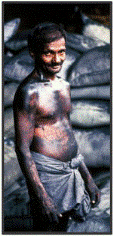Human Trafficking, Interdisciplinary Conference on

Annual Interdisciplinary Conference on Human Trafficking: 6th (2014)
Date of this Version
10-2014
Document Type
Presentation
Citation
6th Annual Interdisciplinary Conference on Human Trafficking, Lincoln, Nebraska, October 9-11, 2014
Abstract
This paper draws on the results of a large multi-method study, which examined human trafficking from the former Eastern Bloc to Northern America (Canada and the United States). The study was conducted in 2011-2013, and funded by the Social Sciences and Humanities Research Council of Canada (SSHRC). The analysis is grounded in the findings from 9 countries of the Balkan region included in the study: Albania, Bulgaria, Bosnia and Herzegovina, Croatia, Kosovo, Macedonia, Montenegro, Serbia, and Slovenia. The following data sources were used: (a) national and international reports, media and academic articles, and various documents (in English and official languages of the region) pertaining to human trafficking in/from the region; (b) email and telephone inquiry of 37 counter-human trafficking organizations (31 in the Balkans, 6 in Canada); and (c) in-depth qualitative telephone and face-to-face interviews with 20 organizational representatives (16 in the Balkans, 4 in Canada) and 9 key informants (police officers, government officials, academics, journalists) in the Balkans. The results of the study suggest that the Balkan region plays a rather insignificant role in human trafficking to Northern America, as only a few direct, indirect, and potential cases have been found. However, each of the aforementioned Balkan countries has been identified as a source, transit, and destination country for human trafficking. It also should be remembered that only a fraction of human trafficking cases ever come to light, mainly due to the hidden nature of this crime and because victims are afraid to come forward. Further, cases are becoming increasingly complex and may not be classified as ‘human trafficking,’ but rather as smuggling or other forms of illegal/irregular migration. Several case examples will be presented to illustrate the complexity of human trafficking situations and the limitations of existing classification systems.
Included in
Criminology Commons, Domestic and Intimate Partner Violence Commons, Gender and Sexuality Commons, Health Policy Commons, Human Geography Commons, Human Rights Law Commons, Immigration Law Commons, Inequality and Stratification Commons, Law and Gender Commons, Place and Environment Commons, Social Control, Law, Crime, and Deviance Commons, Social Welfare Commons, Social Work Commons


Comments
Copyright (c) 2014 Natalya Timoshkina, Naser Miftari, & Antonela Arhin.